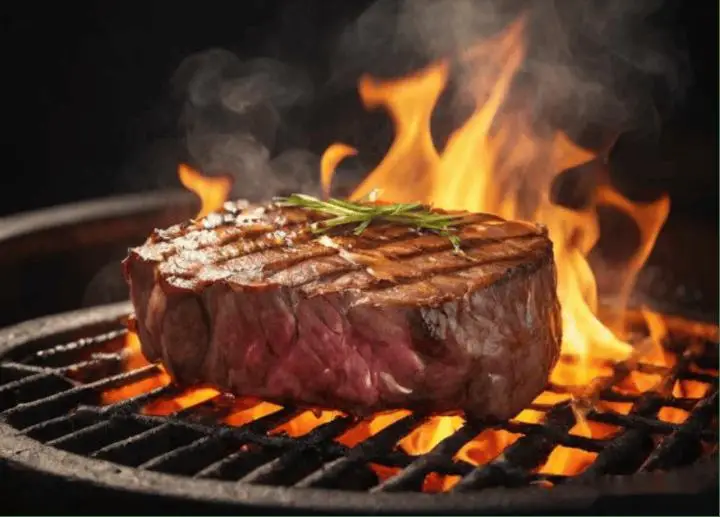Learn how to marinate steak for tenderness and flavor in one easy step—turn you into a master chef in seconds!
By: actCoupons | 2025-08-05

The biggest headache when cooking steak at home isn't just the right heat, but also how to marinate it to ensure it's flavorful, tender, and juicy.
Let's discuss how to marinate steak for tenderness and flavor.
I. Choosing the Right Steak for Efficiency
- Steak Cuts: Common cuts include Sirloin, Ribeye, T-bone, and Tenderloin. For beginners, ribeye and sirloin offer a balanced texture with just the right amount of marbling, making them easy to master. For those seeking ultimate tenderness, choose Tenderloin.
- Meat Freshness: When purchasing, look for a bright or dark red color, a milky white fat, and a slightly springy texture that springs back quickly when pressed.
- Thickness Recommendations: Steaks should be 2.5-3 cm thick to ensure both texture and ease of cooking.
II. Pre-marinating Preparations
- Bringing the Steak to a Warmth: Remove the steak from the refrigerator and let it sit at room temperature for 20-30 minutes. This allows the center of the steak to reach room temperature, allowing for even cooking.
- Drying: Gently pat dry the surface with paper towels to prevent moisture from forming during frying, which can affect the sear.
- Patting the Steak to Loose: If the steak has fascia or a thick layer of fat, gently pat it with the back of a knife or a meat mallet to loosen the meat fibers, improve tenderness, and allow the steak to absorb more flavor.
III. Golden Marinade Recipe
Here's a simple, easy-to-make, and flavorful homemade steak marinade:
- 2 tablespoons olive oil
- 1 tablespoon minced garlic
- 1 teaspoon freshly ground black pepper
- Coarse sea salt (or rose salt), to taste
- 1/2 teaspoon dried rosemary or a sprig of fresh rosemary
- 1 teaspoon brown or brown sugar (optional, for color and a subtle caramelization)
- 1 teaspoon soy sauce (for umami)
Combine all ingredients in a bowl and mix well. Use a brush or your hands (wearing gloves) to evenly apply the marinade to both sides of the steak.
Note: Adjust the amount of black pepper and salt to your taste.
IV. Marinating Time and Techniques
- Quick Marinade (30-60 minutes): Perfect for last-minute marinade, even 30 minutes is enough to absorb the flavor. Place the steak in a sealed bag or freezer, add the marinade, and gently massage it into the meat to ensure it fully absorbs.
- Deep Marinating (4-6 Hours): If you have time, marinating for more than 4 hours is recommended. You can also marinate in the refrigerator for enhanced flavor and tenderness.
- Overnight Marinating (8-12 Hours): For those seeking the ultimate in flavor, marinate the steak the night before for a more flavorful dish the next day. However, avoid marinating for more than 12 hours to avoid over-salting and affecting the texture of the meat.
Tips:
- During the marinating process, flip the steak briefly every hour to ensure even seasoning.
- Using a dry marinade (just salt and pepper) can also achieve a classic steak flavor without the need for extra ingredients. After applying salt and pepper evenly, focus on warming and patting dry. Even 3-4 hours is a great option.
V. Searing and Resting for Perfect Steak Presentation
1. Pat Dry Before Searing: Before searing, wipe off any excess marinade moisture with paper towels to ensure a high-temperature sear.
2. Preheat the pan and add a small amount of high-smoke-point vegetable oil (such as peanut or sunflower oil) to the pan. Once the oil is slightly smoking, add the steak.
3. Cooking Temperature:
Medium-rare: Cook over medium heat for 2 minutes per side.
Medium-rare: Cook for 3 minutes per side.
Medium-rare: Cook for 4 minutes per side.
4. Let the steak rest to retain its juices: After searing both sides of the steak, transfer it to a plate, cover with aluminum foil, and let it rest for 3-5 minutes. This will allow the juices to redistribute and prevent splattering when cut, resulting in a more tender texture.
VI. Common Mistakes and Solutions
- Applying Salt Too Early: If using a dry marinade, applying salt too early (over 15 minutes) will cause moisture to form on the surface of the meat, preventing it from browning. It is recommended to apply salt 3-5 minutes before cooking.
- Excessive seasonings, causing the meat to release water: Using too much liquid seasoning like soy sauce or lemon juice during marinating can cause the meat to release water. Control the amount or shorten the marinating time.
- Overheating: Putting a cold steak directly into the pan will cause the center to be too cold, resulting in a burnt surface and undercooked interior.
VII. Innovative Flavor Recommendations
- Chinese Style: Add a little light or dark soy sauce, five-spice powder, or Sichuan peppercorns to the marinade. Sprinkle with chopped green onions after frying for a uniquely Chinese flavor.
- Western Style: Add butter, garlic cloves, thyme, and cumin to the pan and fry the steak together, spooning the rich butter sauce over the steak as it cooks.
- Japanese Style: Marinate with miso, rice wine, and honey for two hours before grilling or pan-frying for a unique flavor.
How to marinate steak for tenderness and flavor—it's actually not difficult. From selecting the meat, reheating, drying, hydrolyzing, preparing the marinade, and finally cooking at the right heat, every step is closely linked.
Master these golden rules and make adjustments as you practice, and you'll be ready to cook steak dinners that will amaze family and friends.